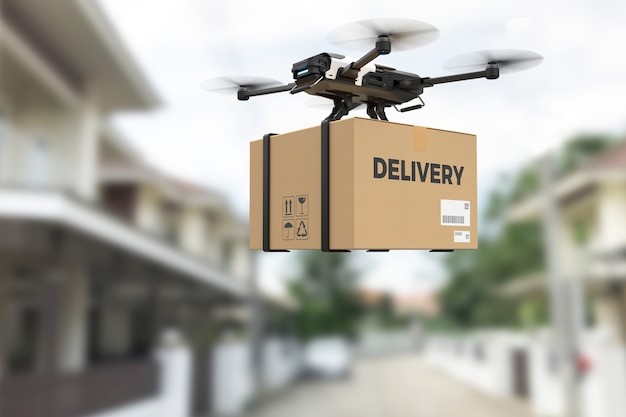Merchandise Delivery in the Middle — Mile, That Is
Cargo delivery in rural areas may soon see fewer trucks and more drones

Writing in Sustainability, Dr. Raj Bridgelall, an associate professor of transportation and supply chain at North Dakota State University, published the results of his study, Spatial Analysis of Middle-Mile Transport for Advanced Air Mobility: A Case Study of Rural North Dakota. The study’s objective, Dr. Bridgelall writes, was to “optimize the logistics network for high-value electronics by integrating AAM solutions, specifically using heavy-lift cargo drones for middle-mile transport and using the mostly rural and small urban U.S. state of North Dakota as a case study.”
Using geographic information system (GIS) and spatial optimization models, the study proposed ways to strategically assign underutilized airports as multimodal freight hubs to facilitate the shift from long-haul trucks to middle-mile air transport. Because electronics have a high value-to-weight ratio they are well-suited for air transport. Using uncrewed aerial vehicles (UAVs, aka drones), the average cost per ton for transporting electronics by air can reduce the average cost by as much as 60% versus traditional trucking. Further extending the principles Bridgelall proposed can trim the average distance traveled by 13%.
Speaking exclusively to AAM Today, Bridgelall explained that he envisions traditional operators, such as UPS and Blade, buying drones for these middle and last mile deliveries. Bridgelall explains that he sees the drone buyers operating them using maintenance agreements.
Drones, like helicopters, face the same weather challenges helicopters face, but Bridgelall explains, “Distributed electric propulsion and redundant autonomous systems, however, could do a better job than human pilots, allowing them to fly in slightly worse conditions of high wind gusts and precipitation.”
While there are weight limitations on cargo-carrying drones — currently about 1,000 lbs. (about 454 kg) — Bridgelall anticipates those limitations may decrease as demands for cargo delivery by air increase over time.

Subscribe to AAM Today
Top 3 Takeaways
• Transporting goods, particularly high-value electronics, by air for middle mile and last mile delivery in rural areas can potentially reduce costs significantly.
• Traditional delivery providers, such as UPS, are likely to buy and operate the drones with maintenance agreements.
• Weight limitations of about 1,000 lbs. (about 454 kg) could be reduced as demand for these new delivery technologies increase.


